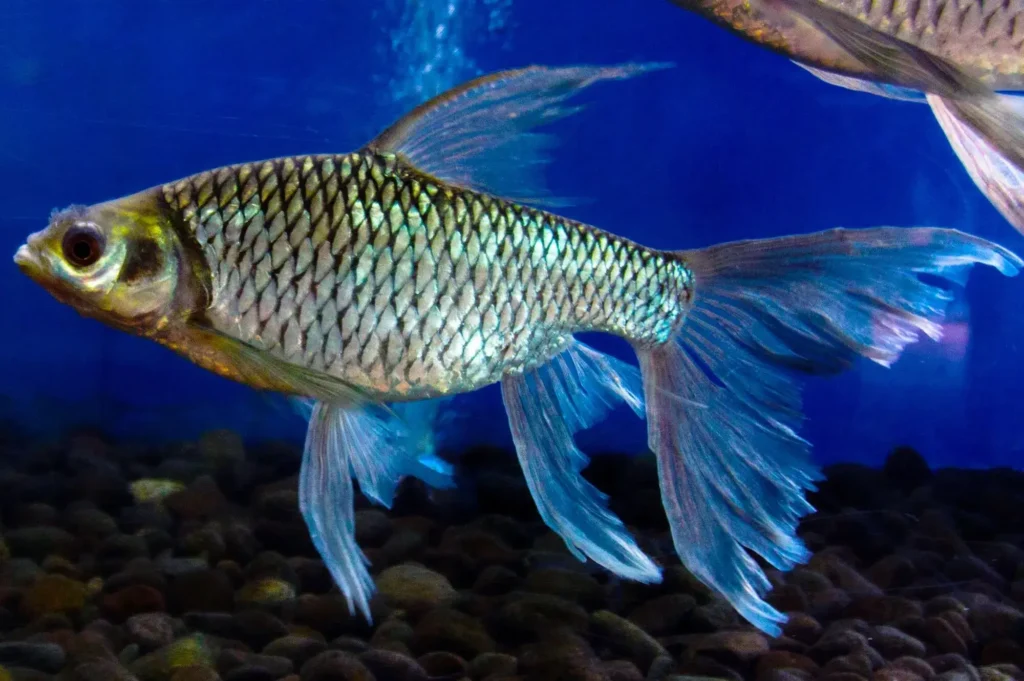
Size
The maximum length of this fish is 15 centimeters, and its maximum weight is 60 grams (2.1 ounces).
Physical Characteristics and Behavior
It features a single set of barbels and a distinctive color pattern with two black spots—one at the base of the caudal fin and one behind the operculum. Females have bulkier bodies, fewer distinguishing marks, and slightly larger sexual maturation stages than males. Additionally, whereas females lack orange anal and pelvic fins, males do. During the reproductive season, certain populations have a crimson lateral stripe that extends from the opercula to the caudal peduncle.
Captivity Conditions and Care

Aquarium Size
Long-term care requires a base with dimensions of at least 120 45 cm or equal.
Water Condition
Shallow water settings like rivers, streams, canals, mangroves, marshes, swamps, ponds, and flooded fields are among its natural water conditions. In their tropical environment, the water’s pH ranges from 6.0 to 6.5, its hardness ranges from 8 to 15 dGH, and its normal temperature ranges from 68 to 77o F (20 to 25o C).
Diet
Probably a foraging omnivore that consumes plant matter, organic waste, worms, insects, and other tiny invertebrates.
Maintenance
Fairly simple to maintain as long as a regular maintenance schedule is followed, and the choice of décor is mostly a matter of personal preference. A sand or gravel substrate with plenty of bigger, water-worn rocks and pebbles, as well as some driftwood or twisted roots and branches, could be used to create a natural-looking design. If desired, plants from genera like Microsorum, Taxiphyllum, or Anubias spp. that can thrive in low-light environments can be included. In the aquarium, feeding is simple, but for the best condition and colors, provide regular meals of small live and frozen items, including bloodworm, Daphnia, and Artemia, in addition to high-quality dried flakes and granules, at least part of which should contain additional plant or algal content.
Behavior and Compatibility
This species is a perfect complement to a tranquil community of riverine fishes, including several botiid, nemacheilid, and balitorid loaches and similar-sized cyprinids. If location is not a problem, it can even be coupled with the majority of calm fish that are too big to be eaten and that have a confident enough attitude to not be intimidated by its size and activity. The easiest method to avoid issues while choosing appropriate fish populations is, as usual, comprehensive research. Since it is a schooling species by nature, six or more specimens should ideally be bought.
Table





